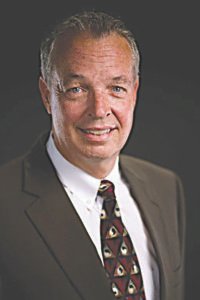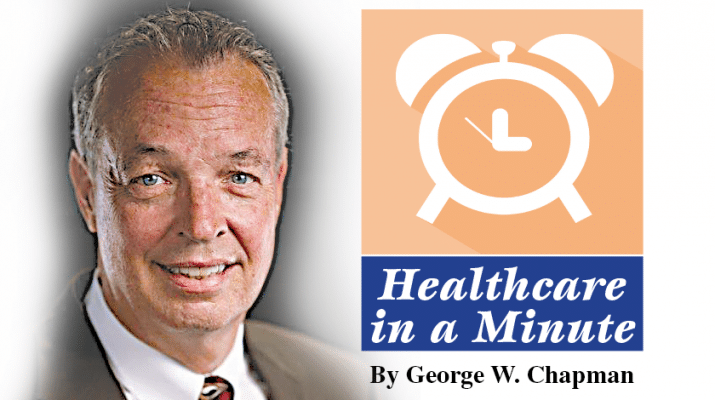By George W. Chapman
At no time in the past several decades has physician burnout and stress been worse.
A recent survey of 13,000 physicians, published by Medscape 2022, revealed one in four (26%) physicians describes themselves as “unhappy” versus just one in 10 (9%) prior to the pandemic. The unhappiness percentage is much higher among hospital-based physicians.
The two-year-old, and counting, pandemic has taken its toll on physician relationships at work and at home. Many physicians indicated they will either retire early or reduce hours, which will only exacerbate the looming physician shortage. The burnout is attributed to staffing shortages, longer and stress-packed hours, the spike in patient deaths and non-ompliant, demanding and outright ungrateful patients. Last December, six large Ohio healthcare systems, including the Cleveland Clinic, ran ads in local papers stating, simply, “HELP.” (See Help Wanted! below)
Telehealth Extended
In January 2020, at the beginning on the pandemic, Congress declared a public health epidemic, which directed more funding to physicians and hospitals. It was scheduled to expire January 2022. Thankfully, it has been extended through April 16, 2022. What this means, primarily for consumers, is the continuing financial, operational and philosophical support for telemedicine.
The pandemic has significantly accelerated the use, acceptance and effectiveness of telemedicine which, prior to the pandemic, was largely underutilized primarily because of payment issues with Medicare and commercial insurers. The PHE authorized Medicare to pay physicians the same for virtual visits as in-person visits. Commercial payers followed suit. Telemedicine has increased or improved access to care for millions of senior, infirmed, disabled, incapacitated consumers as well as those living in rural and remote areas.
As an example, United Health Group saw its telemedicine visits soar from 1.2 million in 2019 to a staggering 34 million in 2020. An HHS study found that telehealth usage ran between 21% and 28% among various demographic subgroups. Understandably, the usage rate among the uninsured was only 9%. Somewhat surprisingly, the usage rate among technology-savvy 18-24 year olds was only 18%. However, when they used telehealth, 73% of them used video. Income was a major determinant as 69% of households over $100,000 income incorporated telemedicine into their care.
Healthcare System Clogged
The combination of higher acuity (and length of stay) of COVID-19 patients with system-wide staffing shortages has clogged or delayed hospital discharges to nursing homes, home care agencies and even hospices.
On the front end, when a hospital can’t discharge patients on a timely basis, it backs up the emergency department.
Consequently, waiting times increase, ambulances are stacked up in the parking lot and ED hallways are jammed with patients on gurneys waiting for a bed.
On the back end, with nursing homes, home care agencies and hospices facing their own staffing shortages, their ability to safely accept a discharge and relieve the pressure on hospitals is severely curtailed.
According to a poll of 14,000 skilled nursing facilities by the American Healthcare Association, 58% are facing severe staffing shortages. SNFs have lost 234,000 employees or 15% of their workforce since the pandemic. At the same time, hospital discharges to SNFs, primarily due to COVID-19, have increased 32%. Discharges to home health care agencies have increased 42% and discharges to hospices have increased 15%. According to the Kaiser Family Foundation, more than 200,000 SNF residents and employees died from COVID-19. Your patience, understanding and cooperation will go a long way with stressed out staff and your treatment.
It Takes a Shark
While the ubiquitous drug lobby has ramped up its efforts to prevent congress from fairly negotiating prices (versus “setting” prices per their misleading ads), billionaire philanthropist Mark Cuban of TV’s “Shark Tank” has started his own on-line generic drug pharmacy called “Mark Cuban Cost Plus Drug Company.” There are currently 100 generic drugs on his formulary. Several popular generic drugs are offered at around half the price of the competition. Unlike typical pharmaceutical industry practices, he has vowed to be totally transparent. In general, prices are based on the manufacturer’s price plus a flat 15% fee. He has eliminated the middle man. It will be on a cash-only basis to keep out predatory pharmacy benefit managers.
Help Wanted!
For the first time, hospital CEOs cited staffing shortages as their No. 1 priority and concern. Perennial front runner finances fell to second place.
Three-hundred ten hospital CEOs responded to the most recent survey conducted by the American College of Healthcare Executives. Ninety-four percent of them cited need for RNs, 85% cited need for therapists, 45% cited need for primary care physicians and 43% cited need for specialists. Adding to the list of concerns were: patient safety, behavioral health and addiction, government mandates, access to services, patient satisfaction, physician and hospital relations, technology, population health management and reorganization.
It will take more expertise and a lot more cash than your average hospital has to reimagine and reorganize how care is delivered. Unless there is some sort of leveling of the playing field, for profit corporations with plenty of expertise and cash (like CVS, Walmart, Amazon, etc.) will gradually dominate the industry within the next decade.
Cancer Prevention Campaign
President Biden has resurrected the Cancer Moonshot Campaign, which aims to reduce the cancer death rate by 50% in 25 years. While COVID-19 has claimed 800,000 lives the past two years, cancer continues to claim 1.2 million lives every year. Biden has directed more funding to the National Cancer Institute and the National Institutes for Health. Industry analysts estimate close to 10 million cancer screenings have been delayed during the pandemic. The Community Oncology Alliance has continually emphasized the fact that regular cancer screenings are inextricably linked to health disparities such as income, insurance, race, access to care and education. Two cancer screenings that have been proven to be both clinically and financially effective are mammography and colonoscopies.


